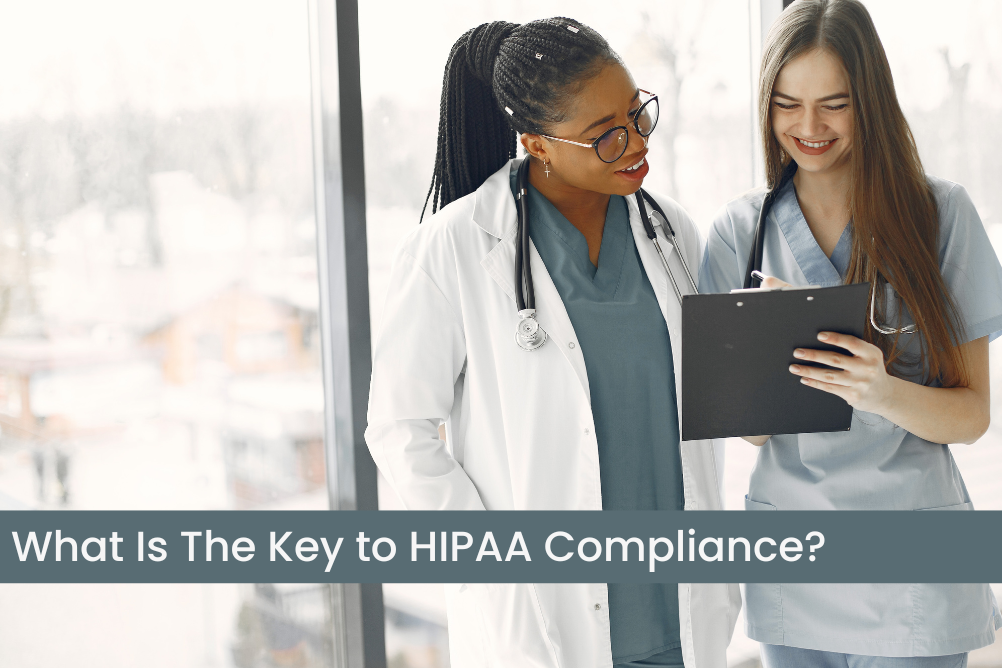HIPAA, or the Health Insurance Portability and Accountability Act, is a federal law that outlines the requirements for protecting sensitive patient information, also known as Protected Health Information (PHI). HIPAA compliance is mandatory for healthcare organizations, such as hospitals, clinics, and health plans, as well as for business associates that handle PHI on behalf of these organizations.
What are the keys to success for HIPAA compliance?
Achieving HIPAA compliance requires a comprehensive approach that involves several key components:
1. Conduct a Risk Assessment
The first step towards achieving HIPAA compliance is to conduct a comprehensive risk assessment to identify potential threats and vulnerabilities to the confidentiality, integrity, and availability of PHI. A risk assessment should include an analysis of the organization’s physical, technical, and administrative safeguards, as well as an evaluation of the likelihood and potential impact of security incidents.
2. Develop and Implement Policies and Procedures
Based on the results of the risk assessment, healthcare organizations should develop and implement a set of policies and procedures that address HIPAA requirements. These policies and procedures should cover areas such as access control, data encryption, data backup and recovery, incident response, and workforce training. The policies and procedures should be regularly reviewed and updated to ensure that they remain effective and compliant with changing regulations and security threats.
3. Train the Workforce
HIPAA compliance is not just a technical issue but also a workforce issue. Healthcare organizations should ensure that all employees, contractors, and volunteers who have access to PHI receive regular and comprehensive training on HIPAA regulations and the organization’s policies and procedures. This training should cover topics such as the importance of safeguarding PHI, the consequences of non-compliance, and the procedures for reporting security incidents.
4. Implement Physical and Technical Safeguards
HIPAA requires healthcare organizations to implement physical and technical safeguards to protect PHI from unauthorized access, use, or disclosure. Physical safeguards include measures such as access controls, facility security, and device and media controls. Technical safeguards include measures such as encryption, firewalls, and network security. These safeguards should be implemented in a way that is appropriate for the organization’s size, complexity, and risk profile.
5. Conduct Regular Audits and Monitoring
HIPAA compliance is an ongoing process that requires regular monitoring and auditing to ensure that policies and procedures are being followed and that security incidents are promptly identified and addressed. Healthcare organizations should conduct regular audits and risk assessments to evaluate their compliance with HIPAA regulations and identify areas for improvement. They should also implement monitoring tools and procedures to detect and respond to security incidents, such as network intrusions, malware infections, and data breaches.
6. Manage Business Associate Relationships
Healthcare organizations must ensure that their business associates, such as IT vendors, billing companies, and third-party service providers, are also compliant with HIPAA regulations. This requires the organization to conduct due diligence on its business associates and include appropriate provisions in its contracts and agreements to ensure that PHI is safeguarded and used only for authorized purposes.
7. Report Security Incidents
HIPAA requires healthcare organizations to promptly report security incidents to the affected individuals, the Department of Health and Human Services (HHS), and, in some cases, the media. Healthcare organizations should have procedures in place for reporting security incidents, such as data breaches, theft or loss of PHI, and unauthorized access or disclosure of PHI. The organization should also conduct a thorough investigation of the incident to identify the cause, the extent of the damage, and the corrective actions needed to prevent similar incidents in the future.
8. Ensure Compliance with a HIPAA-Compliant File Sharing Service
If you’re a healthcare professional, chances are you send and receive client documentation often. PHI is usually sent electronically, although some healthcare practices prefer the archaic method of faxing and in-person file sharing. Online file sharing, although convenient, comes with risks to your client’s personal health information and ultimately your compliance with HIPAA. If information is not carefully safeguarded, cyberattackers can steal and manipulate your client’s data.
When handling PHI, it’s important to use secure HIPAA compliant file sharing services. HIPAA compliant software, such as TitanFile, ensures that all documents uploaded via the platform comply with HIPAA guidelines. Simply upload your documents and you can rest assured that client information is being protected to the greatest extent of the law.
Conclusion
In conclusion, achieving HIPAA compliance requires a comprehensive approach that involves several key components. Healthcare organizations that prioritize HIPAA compliance can help protect the confidentiality, integrity, and availability of PHI and maintain the trust of their patients. HIPAA file sharing does not need to be difficult, use secure file sharing software!

